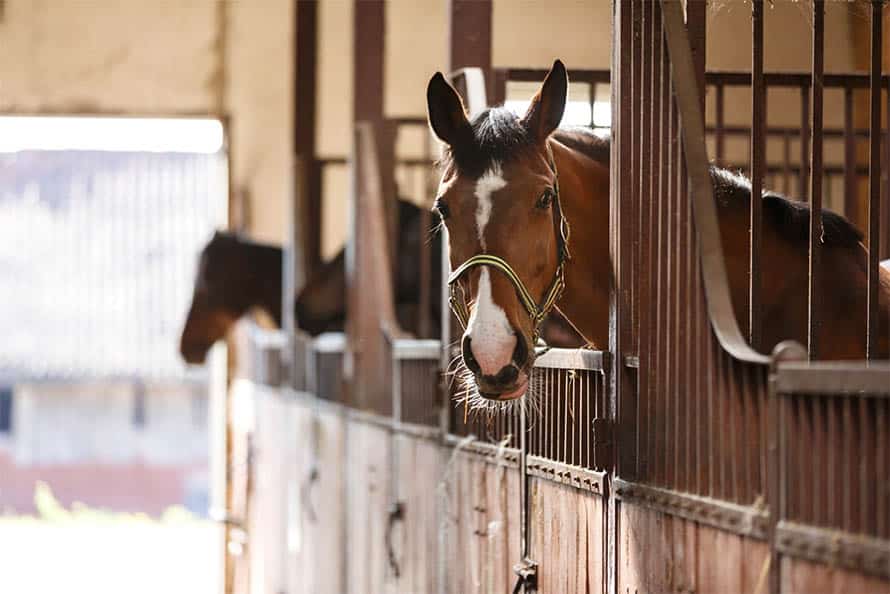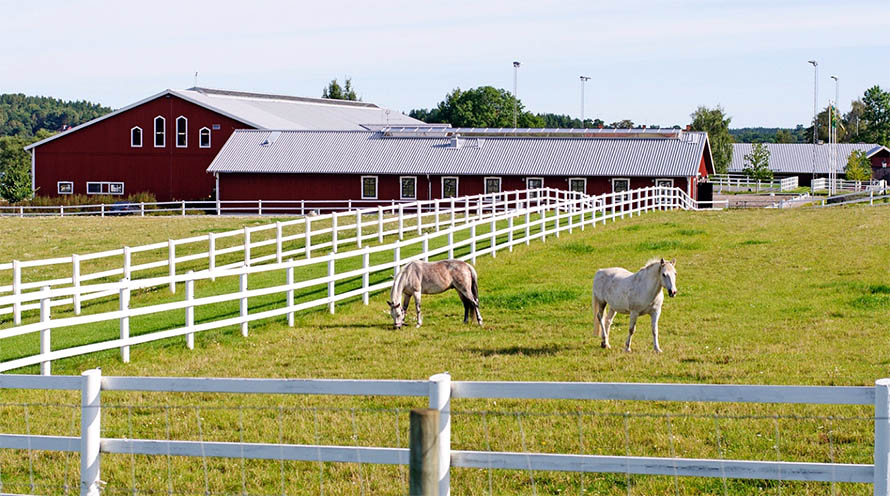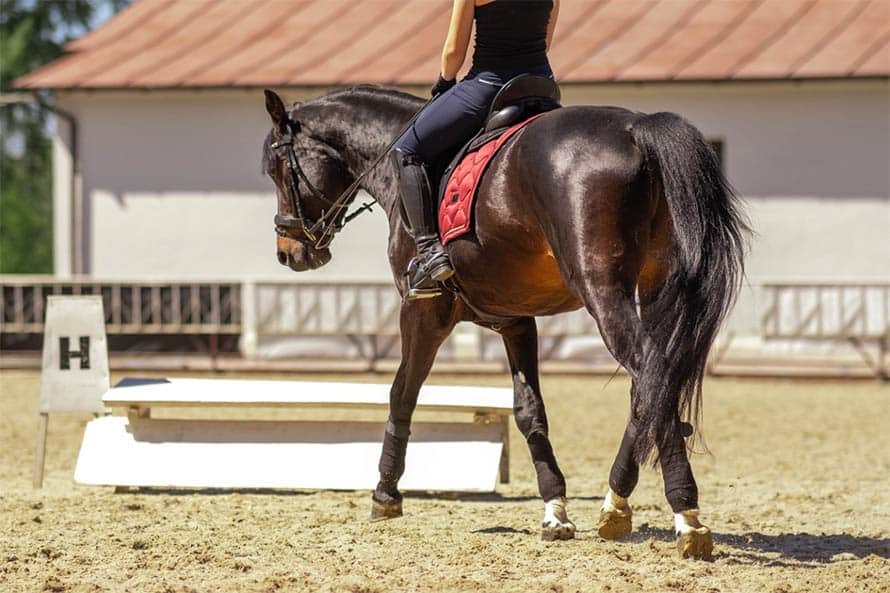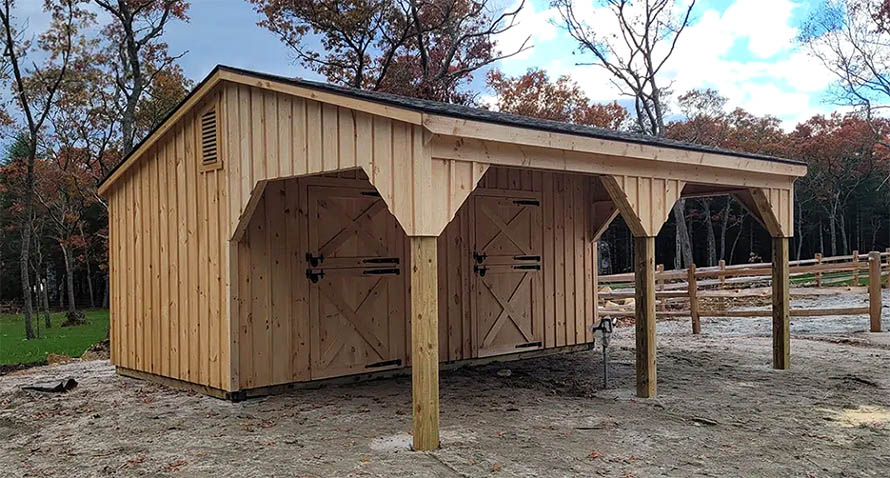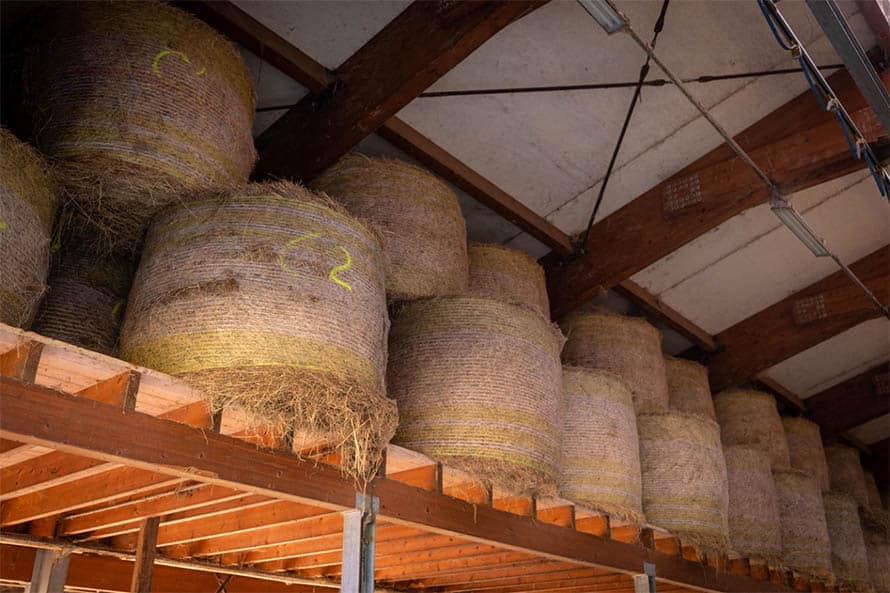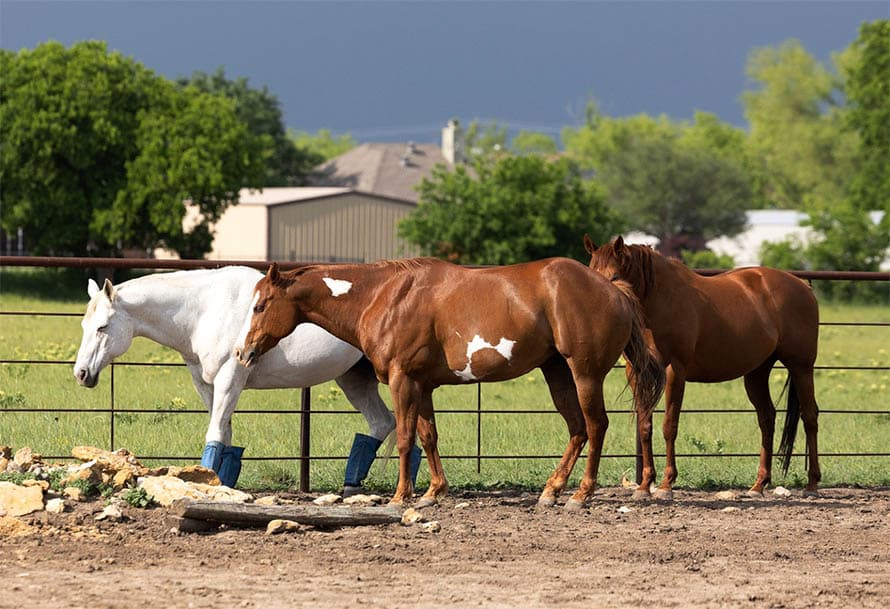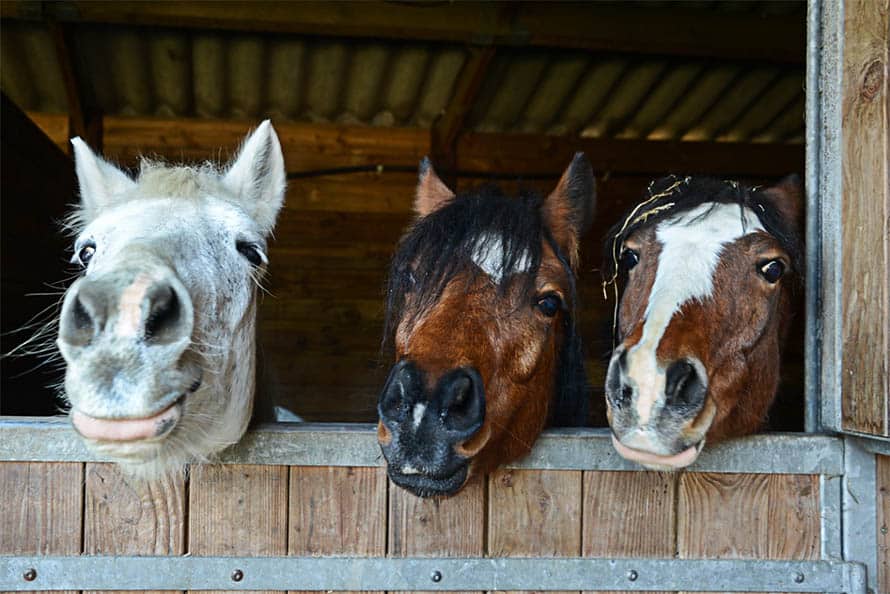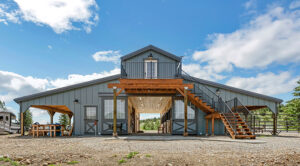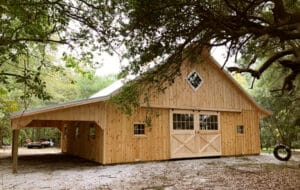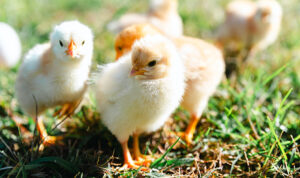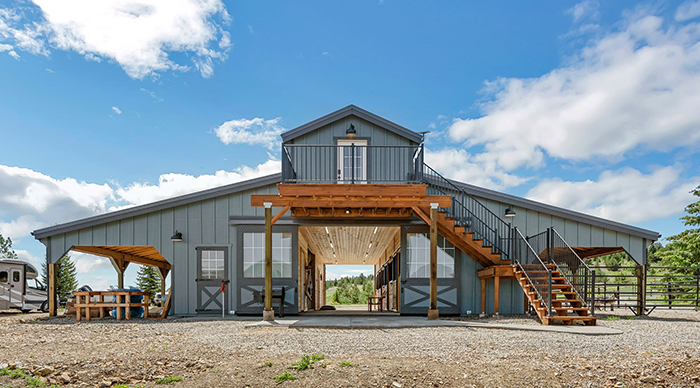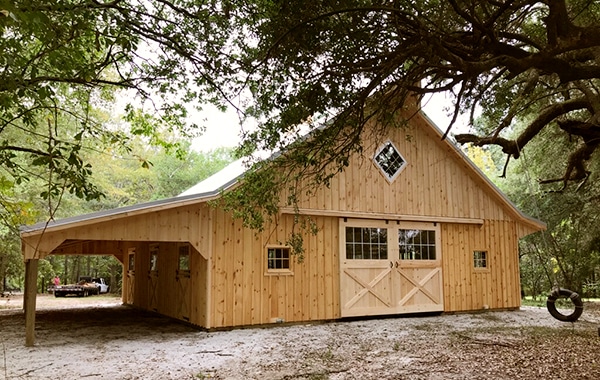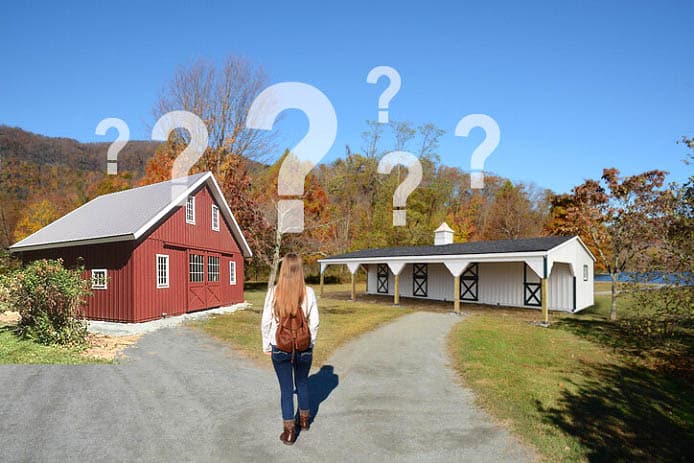Horse owners often seek to immerse themselves in the deeply satisfying experience of horse care by keeping their noble horse stalls in their own backyard rather than at livery.
The dream of waking up to the bedroom window view of horses grazing contentedly in a small paddock or catching a nap in the sun with their heads hanging over the stall doors of a shed row barn, is a dream worth making a reality if you have the space and wherewithal to organize it. But it is not a decision to make lightly.
Many folks don’t own large acreage to accomplish the task of horsekeeping at home. But that doesn’t mean the smallholding or farmette with a few acres of land can’t suffice if the project is carefully managed.
Here are a few notes on how to build a small horse barn for a small property. This will set you on the right road to enjoying the benefits of the backyard horse care lifestyle.
How Many Acres Is Sufficient
The first factor to investigate in the farm development project is how many acres are needed per horse. This doesn’t come down to the simple mathematic of the often quoted one acre per horse.
Begin by talking with your local authorities about any zoning restrictions, permits and requirements for managing horses on small properties. Every town and county has different parameters. Even if you may believe you don’t qualify for a backyard horse operation when talking with the authorities you may learn that a variance may be granted if you meet certain criteria, so it is well worth the ask.
Whatever the rules and regulations, it is prudent to always work within them. Reason being a Certificate of Occupancy will likely be required for any building constructed on your property in order to meet the legal requirements for resale of the property at a later date. The exception being rural regions where agricultural exemptions may apply.
Following the rules will also help mitigate the risk of interference to your project by neighbors. It will also allow you to make an informed decision as to the size, scope, site/placement of the barn building, access driveway and paddock fences.
Regardless of whether you plan to house a 16.3hh warmblood, a draft rescue, or keep miniature horses/donkeys on your property, most ordinances do not address the size of the horses you plan to keep, merely their number.
Just remember that the larger the Equus the more mess it will make, the more it will cost to keep in food/water (and footwear!) and the more space it will need for shelter and grazing. For riding horses an exercise area may also need to be planned for training/riding enjoyment.
Once the zoning factor is known, the next item to evaluate is the quality of the land for grazing and its topography that will allow for a level or workable building site. The better the land quality and its usability in regard to being clear of trees or undergrowth, rocks and thin soil cover, good drainage and permeability of soils, the smaller the ‘plot’ you’ll need to account for in regard to grazing and pasture management.
Dry lots are always a practical solution for small horse property management where pastures and paddocks are not sufficient to facilitate rotational grazing. A practice that allows for seasonal fallow periods for the pasture, where grasses can regrow and recover. Overgrazing paddocks is the fastest route to ownership of unsightly weedy pastures and short grass increases the risk for laminitis issues in vulnerable animals.
Small Footprints Work Best on Small Properties
The convenience and almost instant availability of a combination modular 2-stall horse barn with an overhang and small storage area incorporated under one roof, offers a superb solution to the horse owner faced with managing a confined space for the horse housing structure.
This style barn is perfect for small acreage horse keeping. It offers a workable space in all weathers, with the option for attached paddock or dry lot sectioning being directly accessible from the stalls. The latter practice provides great flexibility in care schedules for the busy horse owner, while the overhang imparts the convenience of being able to work inside during inclement weather to complete feeding/tacking/grooming tasks.
Other great alternatives to the 2-stall horse barn with an overhang and storage space are the 1, 2 or 3 -stall shed row build or the humble but ultra-useful and inexpensive run-in shed. All of which can be readily moved into place by a clever product, the motorized ‘mule’, by your collaborative construction partner if purchased in a modular format.
Horses Come with Baggage
Managing horses on small properties comes with its baggage. The baggage that comes along with horses includes feed and bedding supplies, and the tack and the equipment required for cleaning and mucking out duties of the stables. These items all need a place to live. Accessibility for both storage of these supplies, and their delivery and distribution should be considered.
While expensive tack, medical supplies and the like can easily be stored safely and securely within the home, the messy hay bales, large sacks of shavings or other bedding materials are best kept outside the house but under cover.
While building up is usually a cheaper option than building out, adding a loft space above a barn for storage may also mean having access for large delivery equipment. Obviously what goes up must come down so someone will have to ascend to the storage space to distribute the supplies on a daily basis.
Buying supplies in bulk can save money, so having a decent storage space is a good idea. Extra supplies not needed for immediate use can be stashed away in a dry garage or a shed can be purchased to address this issue. Modular barn building companies often offer discount pricing for a multiple structure purchase. Larger modular building companies often offer a myriad of structures from which you can choose, all produced at their factories and workshops that can be delivered at the same or similar time. Look for ‘to the penny’ pricing and inspiration on style choices online and sign up for newsletters for special deals.
What goes into the horse will inevitably have to come out. So also consider how you will manage the manure the horses create. Good options are composting, container removal services or a manure heap set away from both horses and neighbors where material can be removed on a seasonal basis.
Noise, Privacy and Security
The abundance of horse lovers across the globe desiring equine companionship at home also continues to increase. Those that have gone before that have operated good backyard horse care yards, and learned how to build a small horse barn, have managed to keep the practice of backyard horse ownership alive and kicking. Don’t be one of those people that let your fellow equine aficionados down by not taking care of home horsekeeping properly.
Concerns over backyard horse care health and hygiene practices, noise control and privacy and security of these beasts should be addressed with ardent attention, because the successful management of them will likely determine the longevity of the backyard horse ownership practice on small acreage lots.
It is a good plan to plant hedges and/or install tall solid fences on the property perimeter or side or front lines for privacy and security. Horse fencing should also be secure to avoid equine escape from assigned horse areas.
While soft landscaping choices will mitigate noise issues, remember to keep plant life to a toxic free variety suitable for use around horses, and plant hedges/shrubs species that won’t take too much labor to trim and manage.
Overgrown foliage that overhangs the property line, whether it emanates from trees or shrubbery, is a great way to upset your neighbor who may not welcome its presence.
Place odor causing and fly attracting manure piles away from property lines and active areas of human engagement that is close by, such as public walkways, the neighbors pool or outdoor living area. This is essential to encourage good neighborly relations.
Contemplate introducing the beauty of horses to neighbors that are neophyte horse folk through managed encounters such as a backyard barbeque events etc.. This can help defray objections to the presence of horses in the neighbors environment. It’s hard to be angry with something or someone you like and appreciate.
Don’t Add More Horses Over Time
Humans that love animals are often guilty of adding, ‘just one more’ to the collection of wee beasties in their domain. Resist the temptation to increase your small herd. Buying or rescuing another horse is not akin to adding another pair of shoes to your ‘Imelda Marcos’ habit. Don’t become a horse hoarder.
If the situation arises that a horse no longer suits its purpose then rather than leave it sitting it is better to rehome, resell or rehabilitate it to another worthy horse lover where it will have a purposeful life before you consider its replacement. Embrace the input from non-horse family member that keeps you straight on this matter.


